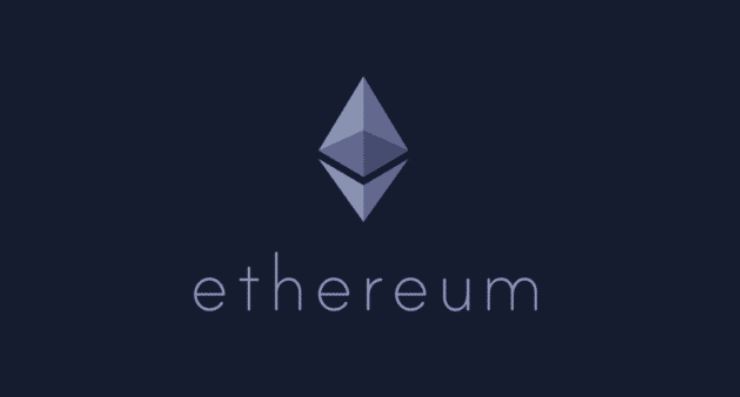State of Blockchains: Community Perspectives

Every quarter, CoinDesk Research surfaces the key data, trends, and events with its State of Blockchains reports. As our research efforts evolve and expand, we hope to provide amplification to perspectives within the crypto community. We reached out to analysts, builders, and lawyers to understand the industry from their unique vantage point.
Let’s dive in:
Analysts:

Tom Shaughnessy (@Shaughnessy119)
51percent Crypto Research LLC (Senior Analyst)
4Q for crypto was a waiting room to see the doctor for a lot of projects, and a lot of projects couldn’t afford to see the doctor. We’ve seen a massive reality check for private companies (Bitmain and ConsenSys cut the majority of their workforces) and for projects (ETC Dev cut teams, Steemit had major layoffs). While reality is trimming the fat, the developer community is stronger than ever in our opinion as resources shift from would-be projects to those who are executing. Ethereum’s Constantinople upgrade in January offers developer updates as a roadway to Serenity, we’ve seen MakerDAO grow and is now locking up 2%+ of all ethereum as decentralized finance grows and Bitcoin’s Lightning network has seen impressive growth. Net, reality set in, but so did developers.

Kevin Kelly (@Kevin_Kelly_II)
Delphi Digital (Co-Founder)
Q4 saw a lot of bloodshed across risk assets, with public crypto prices being no exception. We may not be out of the woods yet, but we are starting to see a number of signs a bottom for BTC may be on the horizon (our analysis points to Q1 2019) if historical cycles are any guide. Sentiment has certainly shifted from pure euphoria to skepticism, which is no surprise given how much the market got ahead of itself a year ago. This year will likely mark a turning point where teams building real products with real use cases and consumers will attract both talent and capital, driving great dispersion among returns.

Ria Bhutoria (@riabhutoria)
Circle Internet Financial (Lead Analyst, Circle Research)
Interest in crypto has shifted from ICOs and retail mania to solving real pain points for consumers and institutions in a way that should drive sustainable adoption and help the industry mature. Pain points we expect will be addressed include improving the user experience, encouraging institutional adoption, further integrating stablecoins into applications that require a price-stable asset, and finding ways for projects to compliantly raise money through vehicles like security token offerings.

Alex Kruger (@Crypto_Macro)
Aike Capital (Founder)
Cryptocurencies are mostly in the doldrums, with realized volatility down to September levels. The two main bullish catalysts, BAKKT’s launch and Ethereum’s block rewards reduction, were both delayed. Facing a certain SEC rejection, the CBOE withdrew the Van Eck bitcoin ETF application. Temporarily. Meanwhile, the bitcoin community is excited with GRIN, LN continues to expand, the Veil app revitalized Augur, Maker’s Dai keeps growing, TRON is jumping on the back of its BitTorrent token, and the bitcoin market is back into accumulation mode. My base case scenario for the months ahead is a continued trading range. I see considerable odds of new lows. Incremental retail demand has disappeared, institutional interest continues to wane, and miners and exchanges always need to sell.

Hayden Otto (@CryptoStratz)
CoinSpice (Executive Editor)
Q4 2018 saw the final capitulation of most ICOs and blockchain projects that gave us nothing but hot air. Blockchain, like all new technology, must be accessible and have undeniable utility. When people realize that our greatest opportunity, then and now, is as a P2P electronic cash system, the whole space will be a lot better off. Projects which understand this will emerge at the end the current bear market as champions; unscathed and a top pick for investors as the new bull market begins.

Cole Kennelly (@ColeGotTweets)
On-The-Chain Newsletter (Founder / Consultant)
While 2018 wasn’t kind to the price of cryptoassets, it was still a great year. 2018 was an exceptional year for building and learning. Lightning Network (LN) and MakerDAO were among the top developments in 2018. This past year, LN went from virtually 0 to 5000 nodes. In Q4 alone, LN capacity nearly tripled. As for MakerDAO, Dai remained stable as ETH declined more than 90%. Furthermore, Q4 saw a 65% increase from Q3 in the number of collateralized debt positions (CDPs) created with Maker. Looking forward, I am especially excited for WBTC to serve as collateral for Dai. What a time to be alive.

Christopher Bendiksen (@C_Bendiksen)
CoinShares (Head of Research)
Q4 proved yet again that yes, miners will go offline if unprofitable… and no this does not cause “death spirals”. In that sense this was the most exciting quarter in years from a Bitcoin mining perspective. For the first time ever, the technological development of mining gear had matured to the point where the industry could observe meaningful, successive difficulty decreases on the back of large price contractions. As miners saw their cashflows turn negative, large amounts of unprofitable hardware was shut down and removed from the market. Furthermore, the system worked exactly as intended with difficulty coming down almost 40% and setting a new profitability equilibrium to reflect the reduced hashrate. Looking ahead towards the next price cycle and reward halving I am extremely excited for those miner entrepreneurs whose economic calculations were correct, and look forward to the improvements the disruption will bring to the industry.

Zack Voell (@zackvoell)
Messari (Analyst)
Q4 saw the price of bitcoin and other digital assets take new investors full circle from “hilariously rich” to predictably “rekt”. But by any other measure, this quarter was one of the industry’s best, specifically for scaling and privacy. The quantity and quality of privacy options grew enormously with the continued development and record-breaking use of other Bitcoin solutions like Samurai’s Stonewall feature and CoinJoin use via Wasabi Wallet and the launch of both Grin and Beam just around the corner. Scaling solutions for Bitcoin (and other assets) also bounded forward with Blockstream’s Liquid sidechain and the steady clip of infrastructural build out that Lightning developers maintain. In short, Q4 positioned 2019 to be the industry’s most successfully private, scaled year to date.

Steven Zheng (@Dogetoshi)
The Block (Head of Research)
In Q4 we saw the bear market finally take its toll on the industry’s rank and file. A blend of poor treasury management and exuberant spending during the bull run ended with firms desperately looking for ways to cut costs. And, as we’ve seen, the most attractive cost-cutting option appeared to be widespread layoffs. Crypto businesses ultimately realized that they were spending too much time thinking about cryptoeconomics rather than business economics and were rightfully penalized. My prediction for the new year is more layoffs, followed by an intense refocus on building products that actually matter for end users.
![]()
Nic Carter (@nic__carter)
Castle Island Ventures (Partner)
Q4 saw sentiment found a new low as enthusiasm for public blockchains continued to abate. Despite this, some trends continued to manifest: block usage on Bitcoin and Ethereum continued its recovery as the major chains saw fresh utilization; LocalBitcoin volumes ticked up, especially in crisis-struck countries; and more mature market infrastructure plays were funded and announced. Subjectively, venture funding finally felt the chill from the downturn in public markets, but it remains robust overall. In the next quarter, I expect a few larger ICO projects to make a stand against regulators while most others melt away and give back what funds they can.
Builders:
![]()
Bernhard Mueller (@muellerberndt)
ConsenSys (Product and Security Engineer)
This quarter we’ll see a continued focus on enabling mainstream adoption as major obstacles discovered in the past two years are being cleared. Stablecoins will solve volatility, while scaling solutions and refined user interfaces will gradually make trustless e-commerce on the Internet a reality. Useless coins will continue to die off as investors have become more skeptical about the value propositions of blockchain projects. I expect investments to flow into platforms that innovate and consistently deliver real-world use-cases.

Vin Armani (@vinarmani)
CoinText (Chief Technology Officer)
The last quarter of 2018 was a turning point for Bitcoin and the wider cryptocurrency market. The Bitcoin Cash “Hash War,” which resulted in the creation of the Bitcoin Satoshi Vision (BSV) network fork, left many questioning their understanding of the interconnected nature of the ecosystem. Major Bitcoin miners battled in November, moving hash power off of the BTC network and onto BCH while selling large sums of many different coins to keep the war raging. The resulting price action was a shock to many, who thought that conflict on one chain wouldn’t spill over onto theirs. In the coming years, as consolidation continues in the mining industry, investors and entrepreneurs alike will be wise to gauge the sentiment not only of the market as a whole, but of the key individuals who can turn their personal conflicts into market-wide turmoil. In 2019, I expect to see impressive growth of the entrepreneurial portion of the community, thanks to an ever growing set of tools built specifically to empower new breeds of Bitcoin businesses.

Santiago Siri (@santisiri)
Democracy Earth (Coder)
In the ecosystem of decentralized applications, use cases that get traction can be found in the metrics that are intrinsic to each project. In the case of Maker DAO, the sustained growth of created CDPs (Collateralized Debt Positions) throughout 2018 shows a real interest in decentralized credit. Other projects like Aragon, DAOStack and Democracy Earth benchmark the economic activity around DAOs (Decentralized Autonomous Organizations). These metrics rather than the analogy of measuring Daily Active Users —as if blockchains served the same purpose of web based networks— are far more relevant to understand what’s actually relevant in the dapp ecosystem.

Jonathan Hales (@jayjayHales)
BitBacker.io (Creator)
Q4 closed out the year on a dour note, with prices around the lows of the year. However, the continued censorship and deplatformings on social media platforms and payment processors have created an incredible opportunity. Blockchain and free speech focused platforms such as BitBacker.io will lead a wave of crypto adoption. While we won’t see a return of the speculative frenzy of 2017, there will be a large increase in usage accompanied by a modest price recovery.

Elon Moist (@coinyeezy)
Honeyminer (Advisor)
Q4 2018 was quietly one of the most interesting times to be in Bitcoin. As the price dropped, so did its importance in the conversation. We started to see more philosophical questions on Bitcoin emerge. Discussions regarding POW vs POS, Big Blocks vs Small Blocks, On-chain vs Off-chain Governance became mainstream… The average crypto user will be more comfortable with hardforks & network upgrades as we can assume all forks that can exist, will exist. Bitcoin will be defined as the sum of all forks. I believe the most exciting future developments are in Bitcoin-As-A-Computer. As more developers enter the space and actively build applications that store, manage, and run data on-chain, we will see exponential progress in what I believe is the first true “World Computer”. The implications of this are incredibly far reaching. Regardless of what happens in the near term, this is one of the most exciting times to be building in the space. I look forward to a Bitcoin future.
Lawyers:

Andrew Hinkes (@propelforward)
Athena Blockchain (General Counsel / Co-Founder)
The SEC continued its informal “guidance through enforcement,” started with the July 2017 DAO report, and emphasized through its settlement orders with Tokenlot, Paragon, Airfox and others, and its summary comments issued shortly thereafter outlining a “path to compliance” for issuers of non-complaint products, that the law as it exists will be applied to securities, regardless of their form of issuance. Director Hinman’s comments about securities being “sufficiently decentralized” have seemingly been orphaned. We now see multiple approaches taken to token offerings internationally, and see US states experimenting with different approaches- although the domestic state-by-state experimentation is laudable, it has been of limited impact so far. Regulators clearly want federally non-compliant ICOs to remain offshore and away from US investors. Expect more litigation and enforcement against exchanges of cryptoassets, ICO issuers, promoters, and persons acting without required licensure as broker dealers and syndicators of ICOs in the coming years as the SEC mines the data obtained in response to its subpoena campaign of early 2018 to identify defendants. These efforts may be impaired, however, by the ongoing government shut down. As ICOs wound down, domestic fundraisers began to look to compliant tokenized securities. Early versions of these assets resemble ICOs wrapped in securities compliance, providing instruments with restricted liquidity and uncertain legal terms and rights to buyers.

Jason Seibert (@FJasonSeibert)
Seibert-Law (Attorney)
Q4 2018, also known as the great crypto-winter, saw an interesting shift in narrative and dialogue. While some in the industry continue to rail against regulatory interference, others applaud the possibility of regulatory acceptance with the introduction of the token-taxonomy act (and others). Experts continue to argue over the legality of certain types of offerings and ICO’s have all but stopped completely. Many hope that the passage of legislation carving out exceptions for ICO’s will bring a return to the highly speculative industry. Until then, the STO is the new shiny toy, but without adequate or available liquidity in the form of ready exchanges, the success of STO’s remains to be seen.

Nelson Rosario (@NelsonMRosario)
Smolinski Rosario Law PC (Principal)
For whatever reason, the crypto-community treated the end of Q4 2018 as an event to celebrate. As if the so-called CryptoWinter had passed and nothing but green pastures lay ahead. In terms of the legal and regulatory landscape the reality seems to be quite different. Regulators began asserting themselves in earnest in 2018, and there is no reason to think they will pull back in 2019. Similarly, many of the parties that were burned by failed ICOs have only recently begun filing lawsuits and we can expect many more lawsuits in 2019. The CryptoWinter may have just begun.
What about you?
We want to hear your perspective too! Do you have thoughts on the crypto industry? Do you want to add to the conversation? Do you want to help shape the direction the ecosystem moves in? If the answer is yes to all three of those, please fill out our survey. We will be releasing this in the coming weeks with tons of insights provided by…none other than YOU!











Responses